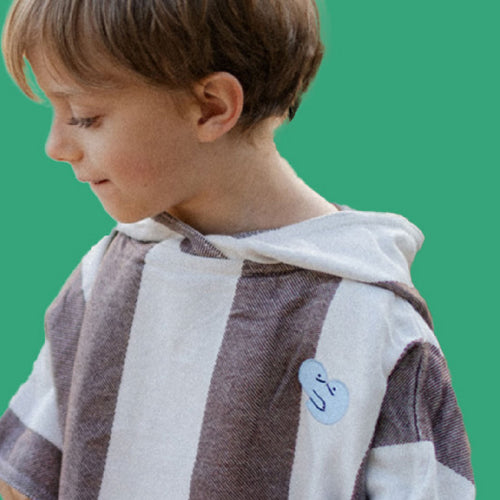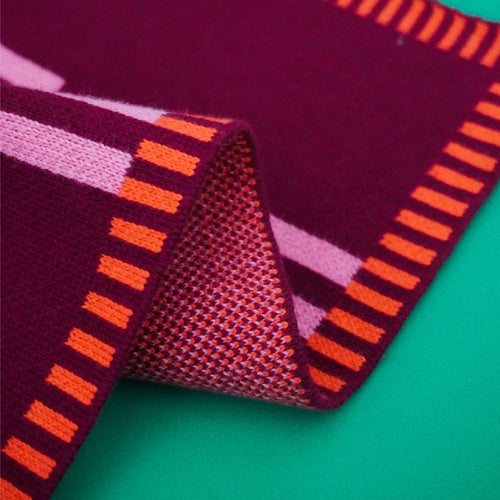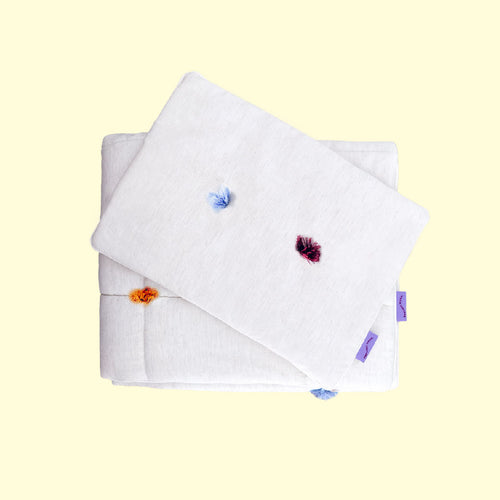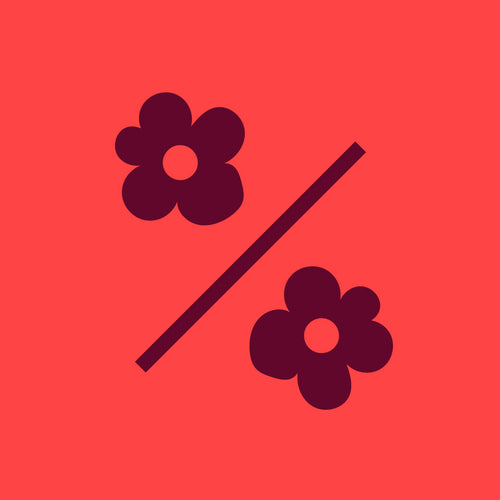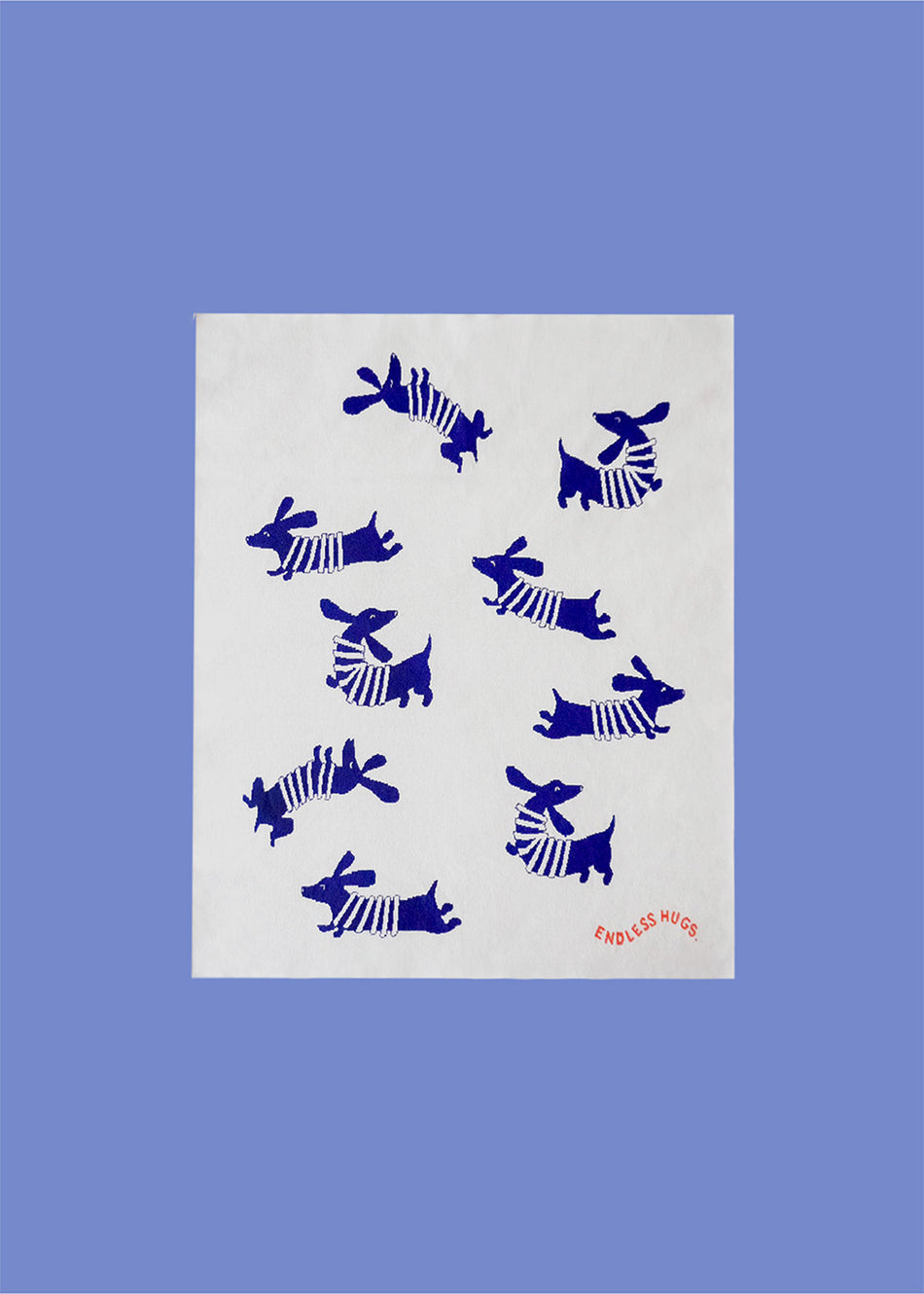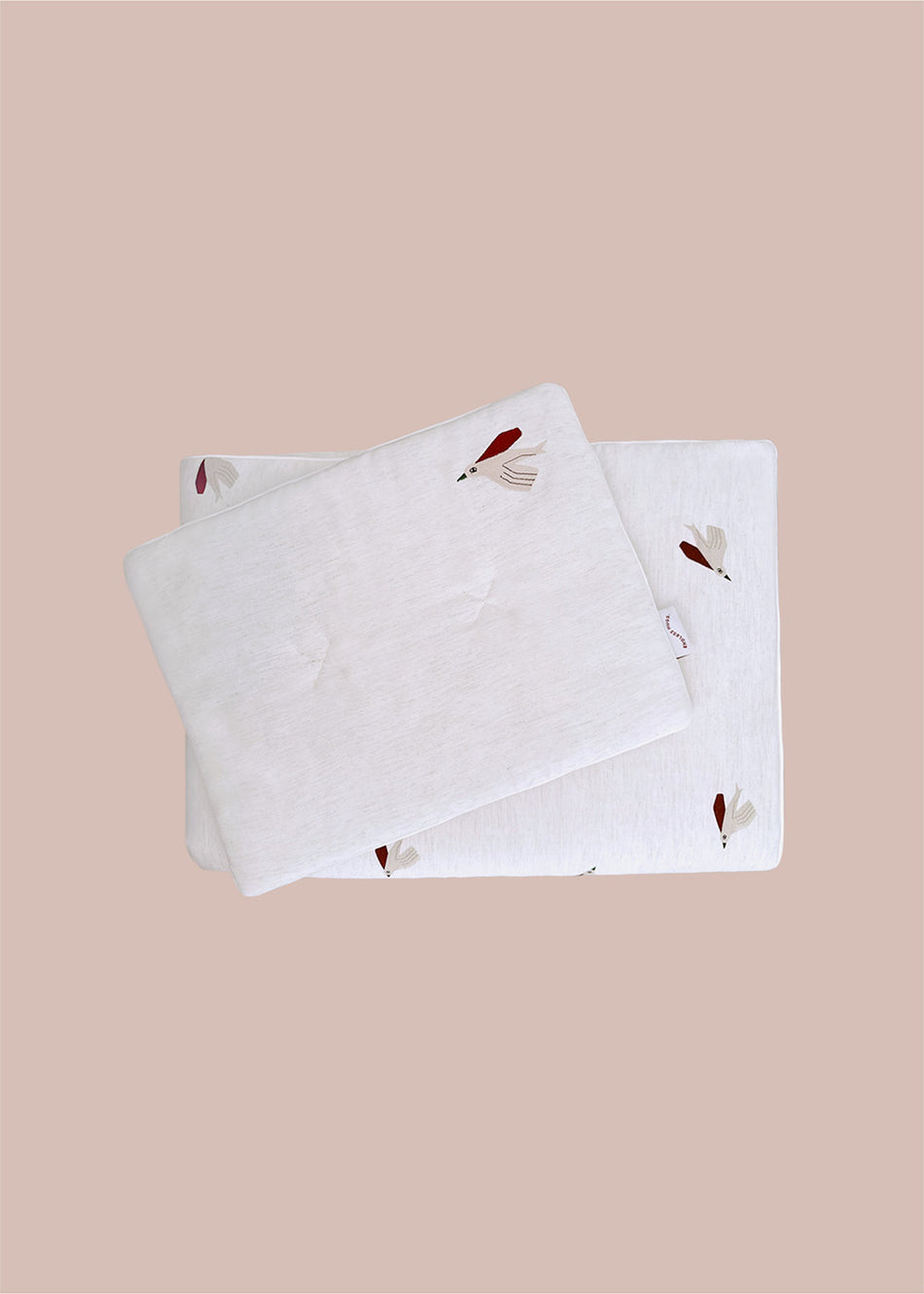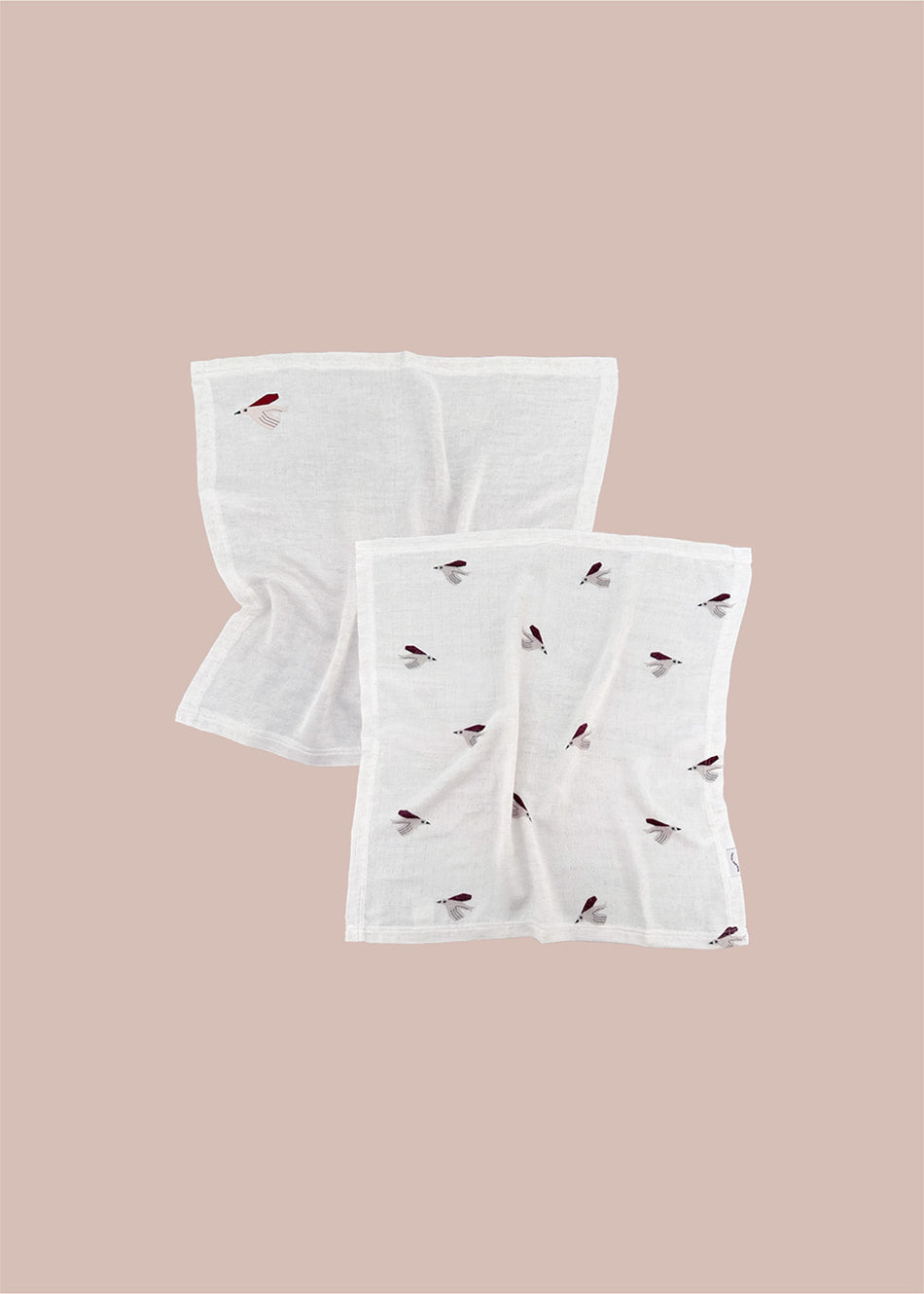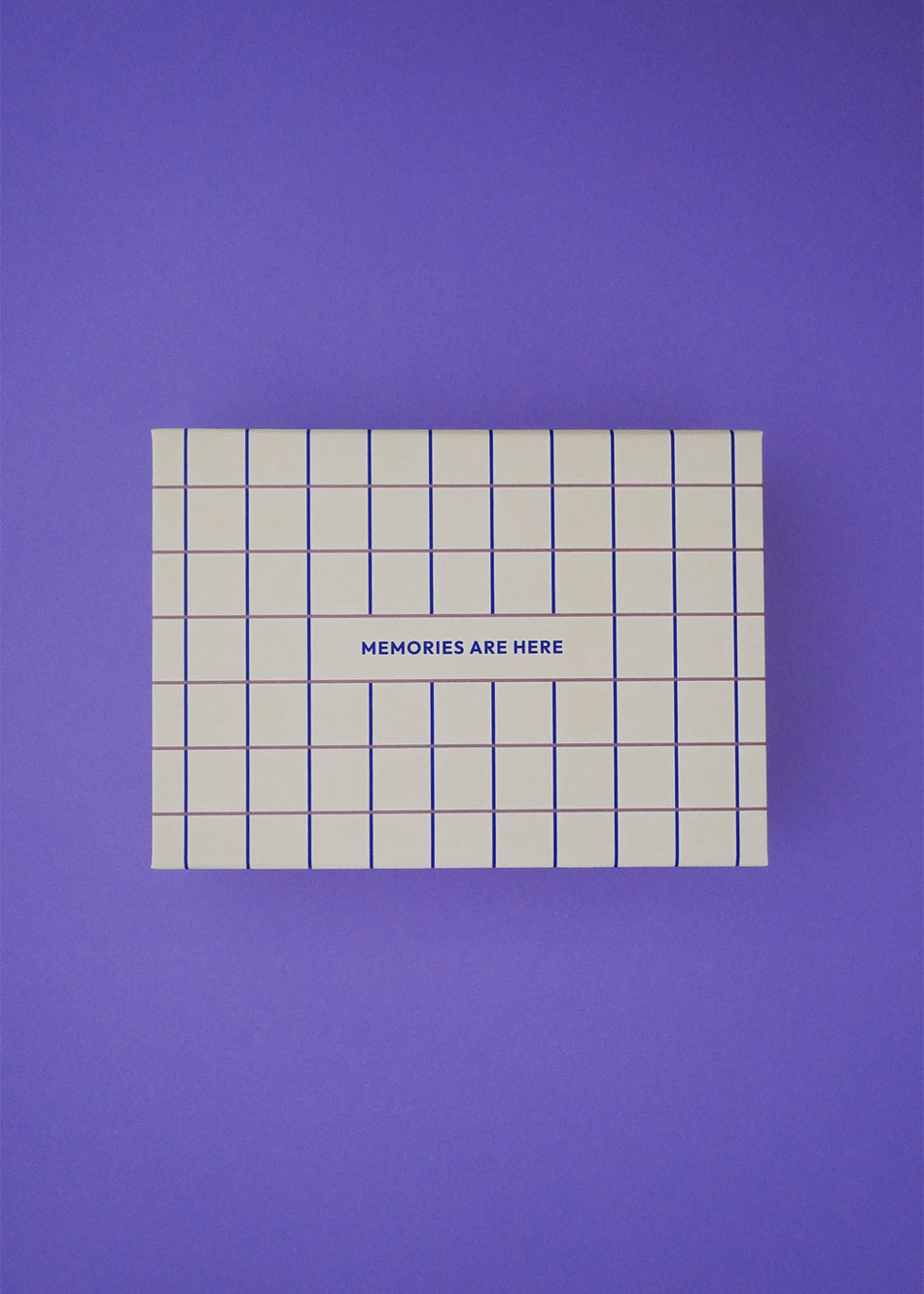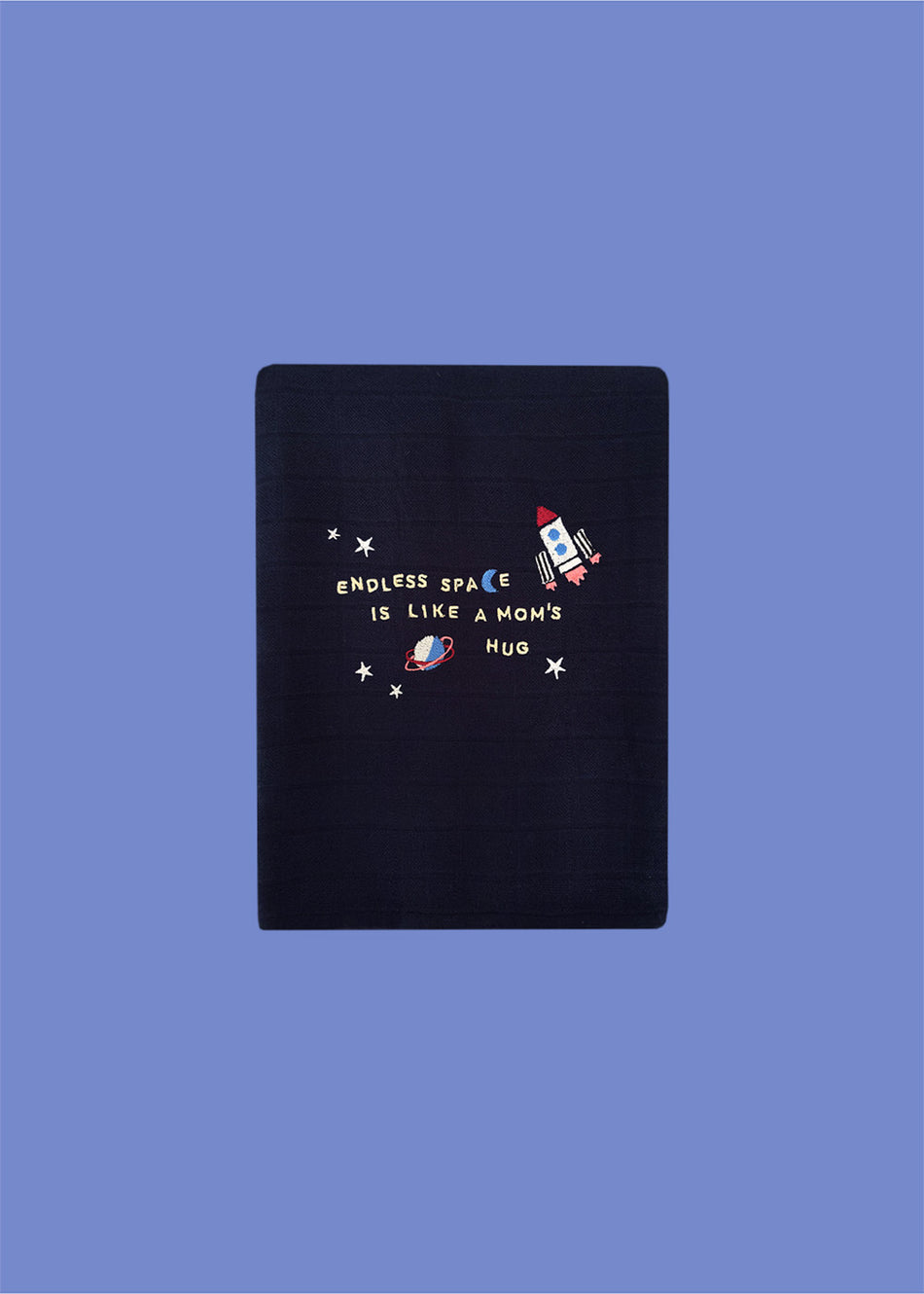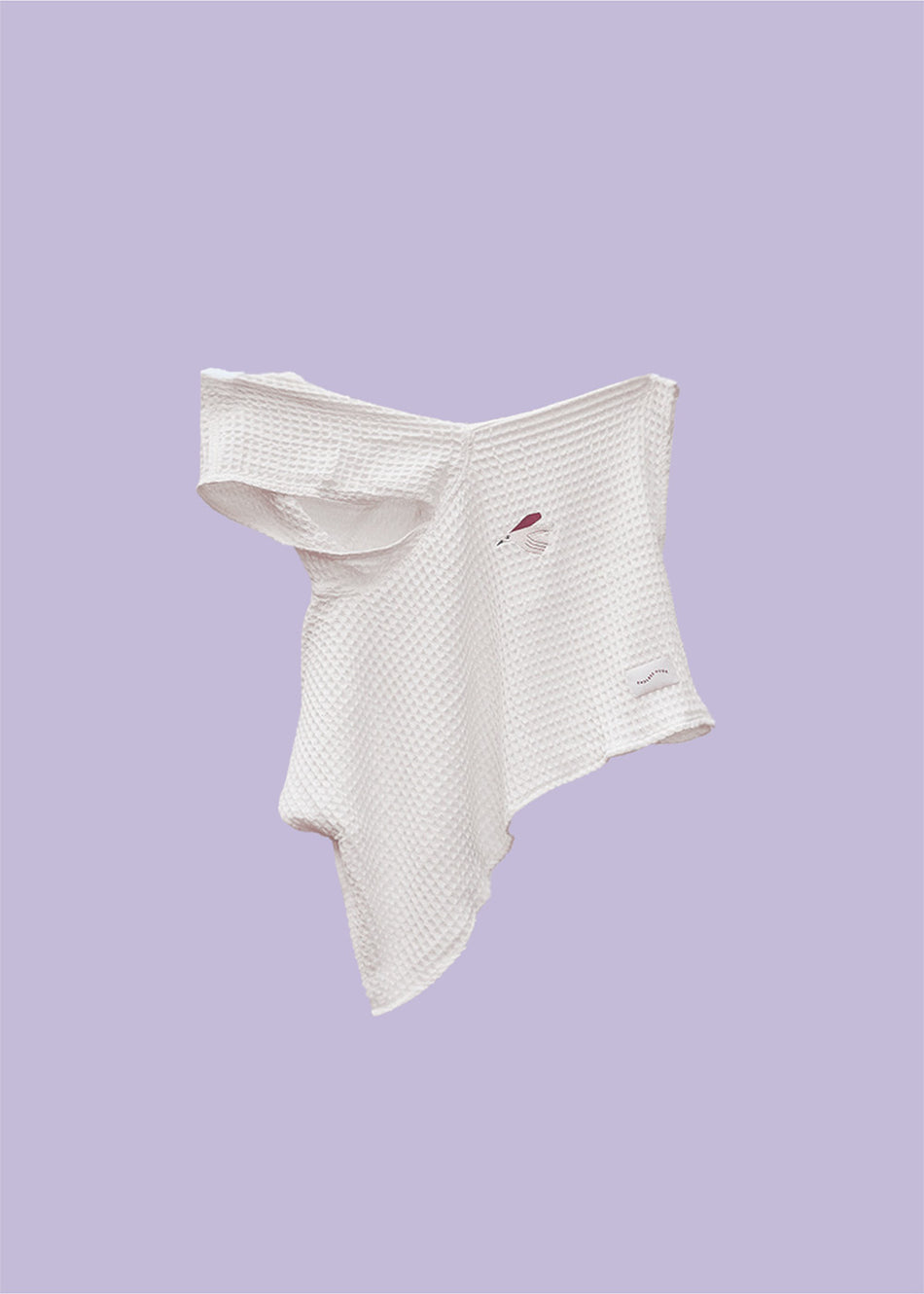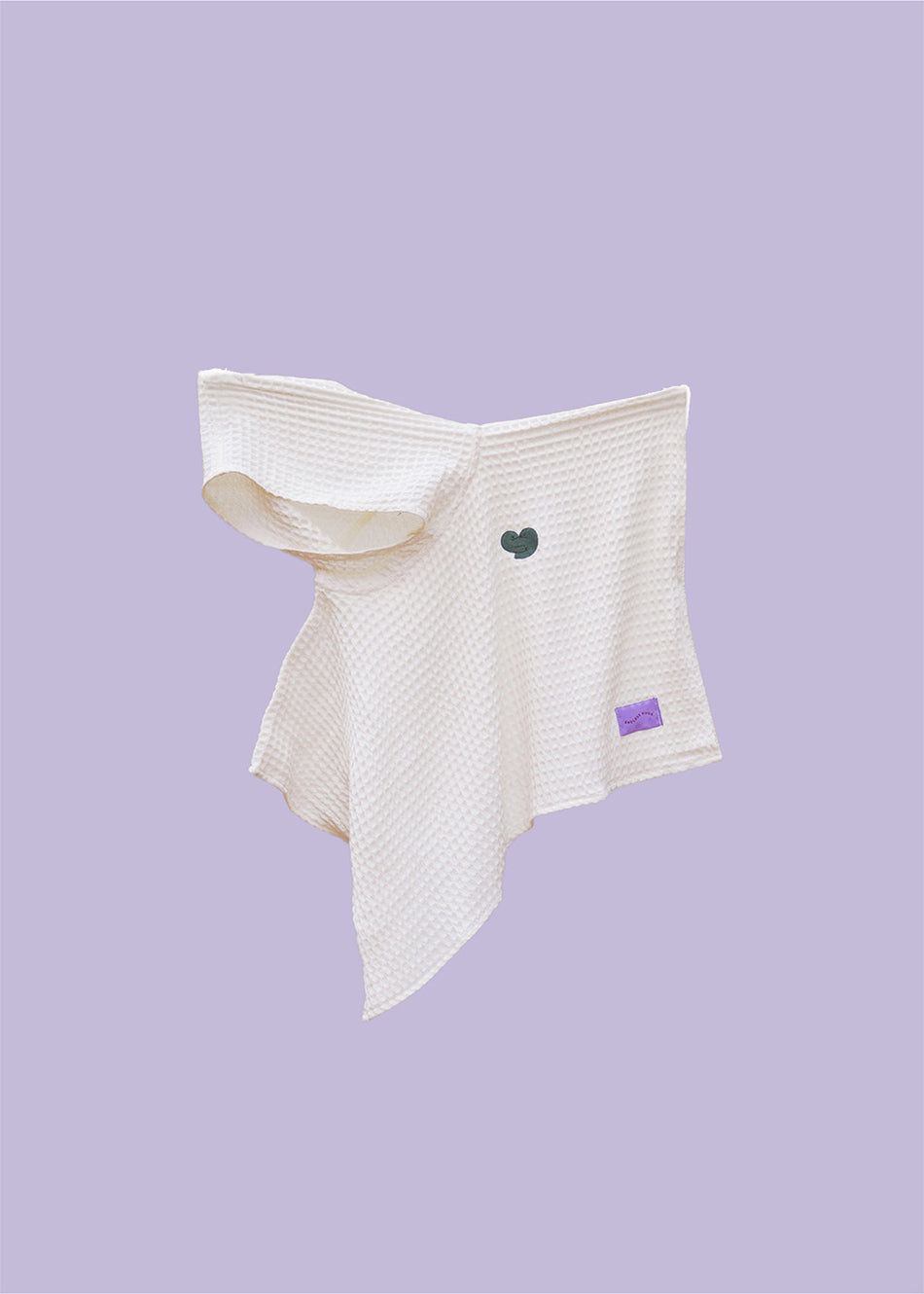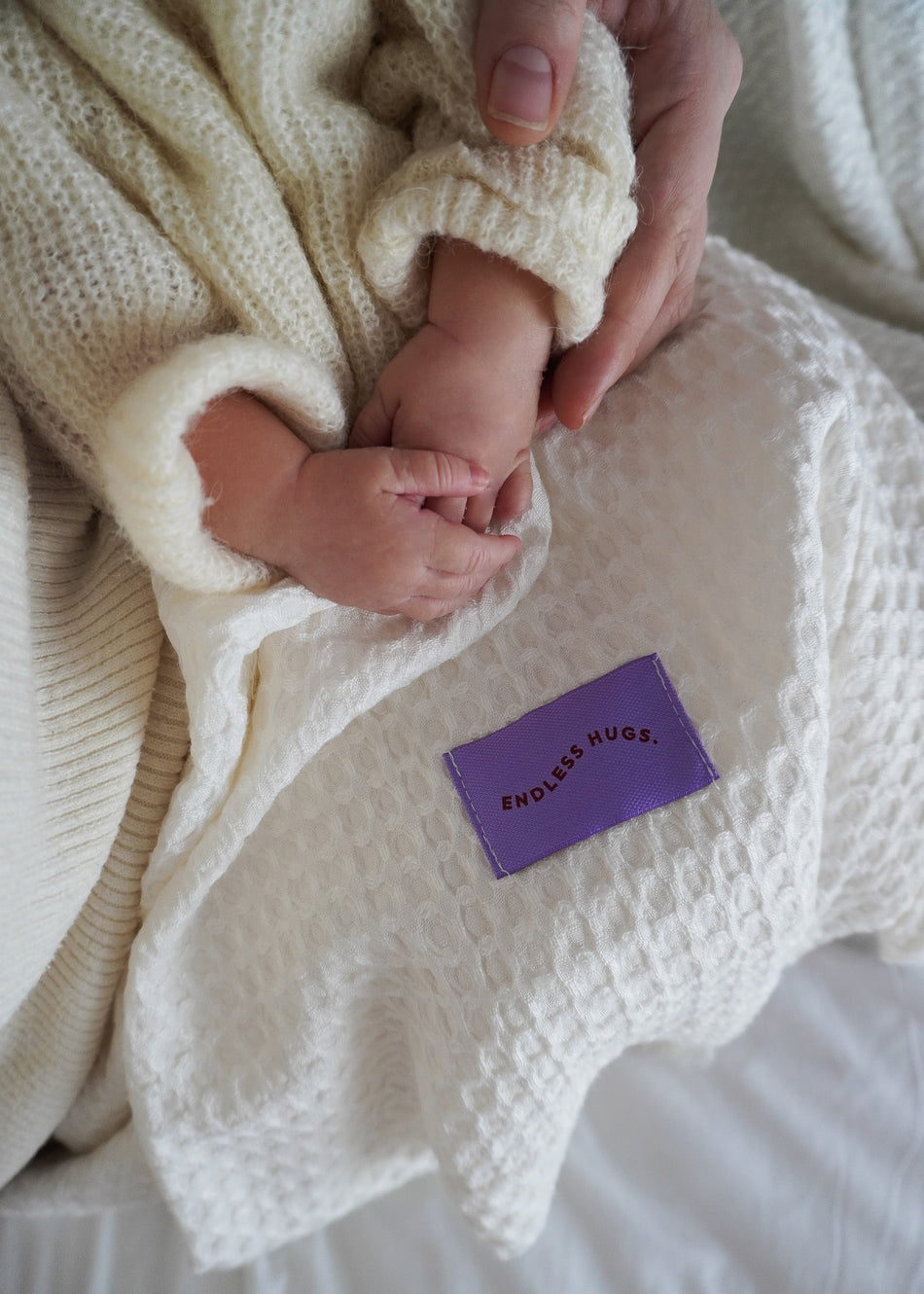Hooded bath towel or bath poncho - a guide for parents
Bathing a baby is one of those moments that can turn into either a joyful ritual or a small, family-friendly flood with a touch of crying. I remember pulling my son out of the bathtub and wondering why no one told me I'd need a third hand! You hold the baby with one hand, the towel with the other, and how are you supposed to catch all those escaping bath accessories?
The solution in this situation is two indispensable helpers – a hooded bath towel and a bath poncho. But which one is better? For a baby or an older toddler? Cotton or bamboo? These are questions every parent probably asks themselves when choosing products for their child.

What is the difference between a hooded towel and a bath poncho?
At first glance, both products may seem similar—after all, both are used to dry your baby after bathing. However, the devil is in the details, and those details can make a huge difference in your daily bathing routine .
A hooded bath towel is a classic solution, resembling a rectangular towel with an additional triangular hood in one corner. It's used to cover a baby after bathing, and the hood protects their wet head from cooling down. This towel is especially useful for infants and younger children who need our help drying them off.

A bath poncho, on the other hand, is a more advanced product – it resembles a mini, sleeveless bathrobe that a child can wear over themselves. It has a hood and partially covered sides, allowing for greater freedom of movement while maintaining warmth. It's perfect for older children who want to be more independent after bathing.

Which product should you choose for a baby - a towel or a poncho?
For the youngest children, especially those under one year old, a hooded bath towel seems to be the perfect choice. Why? Primarily because of its ease of use. Tiny babies need a quick wrapping after bathing, and the towel's traditional shape allows for easy and thorough drying of every nook and cranny of a child's body.
A baby towel with a hood also allows for more maneuverability when swaddling your baby. You can spread it on a changing table, place a wet baby on it, and then quickly wrap it up like a little bath pancake. The hood of a bath towel dries the wet head perfectly and protects it from heat loss, which is especially important for newborns.
However, a baby bath poncho can be a bit tricky to use - putting it on over the head of a wet and often struggling toddler can be a real acrobatic challenge!
When is a bath poncho better than a towel?
The bath poncho enters the scene as the undisputed leader when a child begins to become more independent – usually around the age of 2-3. At this time, little ones begin to show a desire to do everything "on their own," and the poncho fits perfectly into this stage of development.
The biggest advantage of a baby poncho is that once put on, it stays in place, even while your little one runs around the bathroom or house. Their hands remain free, allowing them to play or reach for objects while staying dry and warm. It's also a huge convenience for parents – they can easily dry their hands, prepare clothes, or clean the bathroom without worrying about their child throwing off their towel and getting everything wet.
Additionally, a baby poncho often becomes a favorite among older children due to its appearance resembling a superhero cape - and what three-year-old doesn't want to be a superhero after a bath?
What materials should the perfect baby bath towel be made of?
Choosing the right material is one of the most important decisions when purchasing baby bathing accessories. Toddlers' skin is incredibly delicate and sensitive, so we can't compromise on quality.
The best choice is towels made from natural fibers. Cotton bath towels are a classic that never disappoints – they are soft, absorb water well, and are easy to keep clean. I especially recommend towels made from organic cotton, which is grown without the use of harmful pesticides.
Bamboo bath towels are a newer alternative that's gaining popularity thanks to their unique properties. Bamboo has natural antibacterial properties, is more absorbent than cotton, and is incredibly soft to the touch. Furthermore, bamboo production is more eco-friendly, making it an environmentally friendly choice.
When choosing, also pay attention to the grammage – the higher the grammage, the fluffier and more absorbent the towel will be, but it will also take longer to dry. The optimal grammage for children's towels is around 400-500 g/m².

Does the size of a baby's bath towel matter?
Absolutely! The size of a bath towel should be appropriate for the child's age and size. Too small won't protect your little one from hypothermia, while too large will be unwieldy and make wrapping the baby difficult.
For newborns and infants up to about 6 months old, a towel measuring approximately 75x75 cm is ideal. For older infants and toddlers, consider a larger size, around 100x100 cm, which will last longer.
When it comes to bathing ponchos, it's also worth considering their size. Too large will drag on the floor and pose a tripping hazard, while too small will not provide adequate protection. Most manufacturers' size labels are quite precise, but it's always worth checking the exact dimensions of the product.
What additional features should you consider when choosing bath accessories?
In addition to the basic parameters, such as material and size, it is worth paying attention to a few additional elements that can significantly affect the functionality of a towel or poncho.
The towel's edges should be durable and delicate to prevent irritation to the baby's skin. Ideally, the hood of a towel or poncho should be deep enough to fit snugly around the baby's head. Some models also have additional features, such as hangers, that make drying the product easier after use.
It's also worth considering design – although it may seem secondary, colorful, patterned towels often encourage children to bathe and can turn a daily routine into a pleasant ritual. Older children will especially appreciate fun patterns or cartoon characters on their bath ponchos.
Is it worth investing in high-quality towels and ponchos?
As a mom and a lover of natural fabrics, I can answer without hesitation – definitely yes! While the initial expense may seem higher, in the long run, high-quality products prove to be more economical.
A good-quality hooded bath towel or bath poncho will withstand hundreds of washes without losing its softness or absorbency. Additionally, products made from natural materials are healthier for children's skin and are less likely to cause irritation or allergic reactions.
Polish children's products are often distinguished by their meticulous craftsmanship and high safety standards. By supporting local producers, we not only receive a high-quality product but also contribute to the development of the local economy and reduce the carbon footprint associated with transporting goods from distant countries.
How to care for bath towels and ponchos to make them last as long as possible?
Even the best towel or poncho will lose its properties if not cared for properly. A few simple rules will help us keep our bath accessories in perfect condition for months to come.
First and foremost, it's best to wash your towels at the manufacturer's recommended temperature—usually 40°C. Avoid fabric softeners, which leave a film that reduces absorbency. Instead, add a little vinegar to the rinse, which will help keep the fabric soft.
After bathing, hang towels and ponchos thoroughly to dry – the humid environment favors the growth of bacteria and unpleasant odors. If possible, dry them outdoors, but away from direct sunlight, which can cause colors to fade.
Baby towel vs. adult towel – what are the differences?
While a towel may seem like just a piece of absorbent fabric, products designed for children differ from those for adults in several key ways. First and foremost, children's towels are typically made of softer materials that won't irritate a baby's sensitive skin.
The hood on a baby bath towel is a key feature not found on standard adult towels. It protects a wet head from heat loss, which is especially important for young children, who are more susceptible to hypothermia.
Additionally, children's towels and ponchos often feature cheerful patterns and colors that make bath time more fun. Some models also feature additional features, such as animal ears or horns on the hood, making bath time even more enjoyable.
Towel or poncho - what will your child like more?
This question often keeps parents awake at night when choosing bath accessories. The truth is, the answer depends primarily on the child's age and personality.
Babies and younger children usually don't have specific preferences yet and will accept a hooded towel or a poncho just as well. In their case, practicality and ease of use should be their top priorities.
Older children, especially preschoolers, often have strong preferences. Independent little ones will usually love a bath poncho, which gives them a sense of independence. Meanwhile, children who enjoy being tucked in and cuddled after baths may prefer a traditional hooded towel.
It's also worth paying attention to the design - colorful prints with your child's favorite motifs can make even a reluctant toddler eagerly await the moment to get out of the bathtub.
So perhaps the best solution is... having both products? After all, a child's needs change with age, and high-quality textiles like those available in the Endless Hugs collection last for years and can be passed down to younger siblings. Regardless of your choice, the most important thing is that the product is made of natural materials, gentle on baby's delicate skin, and ensures comfort after every bath.


